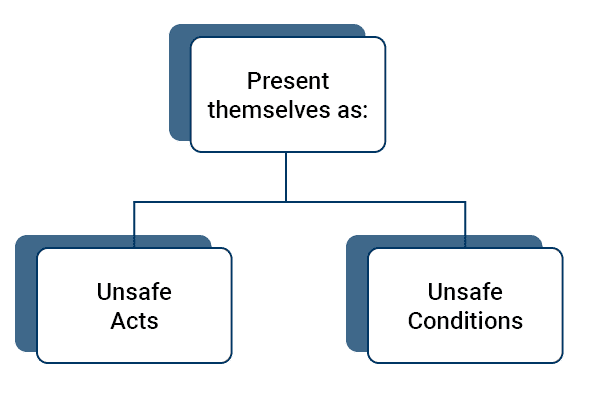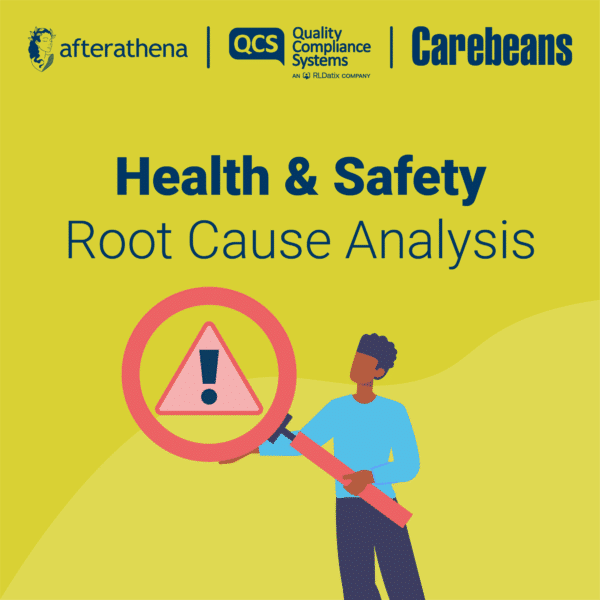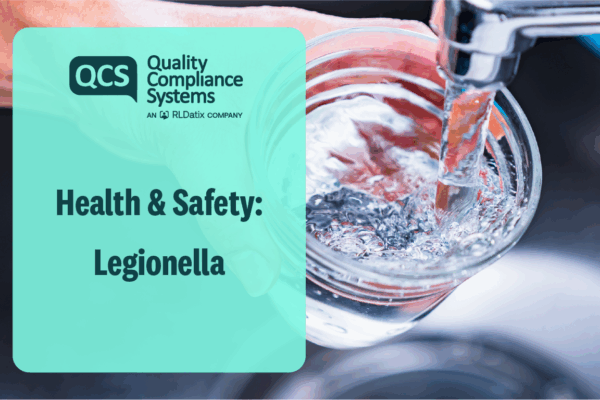Root Cause Analysis
Investigating incidents is a crucial stage in trying to prevent recurrence. Investigations should follow a structured approach to identify the immediate causes, the underlying causes and the root causes.
Immediate causes are the most obvious reason why an adverse event happens. For example, employee cuts finger on desk mounted circular saw, or the employee slips on an oil spill. There may be several immediate causes identified in any one adverse event.
Underlying causes are the less obvious ‘system’ or ’organisational’ reason for an adverse event happening. For example, guard missing on circular saw, or leaking seal on gearbox of forklift truck.
Root causes are an initiating event or failing from which all other causes or failings spring. Root causes are generally management, planning or organisational failings. For example, no scheduled checking of machine guards or forklift maintenance delayed because of production pressures.
A common methodology for root cause analysis is known as “5 why’s”. We say 5 why’s as this is the minimum number of iterations before a root cause can be found.
In determining the level of investigation, we must consider the worst potential consequences of the incident, NOT just the actual outcome.
Investigation Types
Where the potential worst consequence is a minor injury, such as an abrasion treated by a first aider and the likelihood of recurrence is rare or unlikely, a minimal investigation would be carried out.
Where the potential worst consequence of is a serious injury, such as one requiring professional medical treatment and the likelihood of recurrence is possible, a medium level investigation would be carried out.
For all incidents where the potential worse consequence is fatal, a high-level investigation will always be required.
A minimal investigation would normally involve a supervisor who looks into the circumstances and tries to identify how to prevent further similar events.
A low-level investigation would normally involve a short investigation by the relevant supervisor or line manager into the circumstances and immediate, underlying and root causes of the adverse event, to try to prevent a recurrence and to learn any general lessons.
A medium-level investigation would normally involve a more detailed investigation by the relevant supervisor or line manager, the health and safety adviser and employee representatives and will look for the immediate and underlying root causes.
A high-level investigation would normally involve a team-based investigation, involving supervisors or line managers, health and safety advisers and employee representatives. It will be carried out under the supervision of senior management or directors and will look for the immediate, underlying, and root causes.
Hazards
When we look at hazards, they typically present themselves in two categories.
Unsafe acts are any action that differs from a recognised safe practice increasing the likelihood of an incident.
Unsafe Conditions are an unsatisfactory condition existing in a workplace or a condition which may lead to injury, death or property damage if corrective action is not taken.

Scenario
In this scenario we implement the 5 Why’s methodology to determine the immediate, underlying and root causes.
“Care home user mobilising from chair to bedroom unassisted. User was found on bedroom floor had fallen and sustained broken hip”
5 Why’s
- Why – did they break their hip? – They fell
- Why – did the service user fall? – They lost their balance
- Why – did they lose their balance? – They had nothing to hold on to
- Why – was their nothing to hold on to? – They did not use their walking aid
- Why – did they not use their walking aid? – The service user has cognitive impairment and forgot to use their walking aid
- Why – did they forget to use their walking aid? – No supervision at time of incident
- Why – no supervision – No one assessed the risk and instructed someone to supervise the service user
We can therefore identify the Immediate causes as:
- Falling and breaking hip, and
- Failing to use walking aid
The underlying causes as:
- Forgetting to use walking aid
- Service user unsupervised
The root causes as:
- No assessment of service user
- Poor custom and practice of not supervising care users with cognitive impairment
NOTE: Patient Safety Incident Response Framework (PSIRF)
Some Health and Social Care Providers provide services under the NHS Standard Contract and as such are required to use the PSIRF.
The PSIRF sets out the NHS’s approach to developing and maintaining effective systems and processes for responding to patient safety incidents for the purpose of learning and improving patient safety to reduce risk.
The PSIRF has replaced the Serious Incident Framework. The PSIRF no longer uses RCA.
The PSIRF is a contractual requirement under the NHS Standard Contract and, as such, is mandatory for services provided under that contract, including community health providers.
For all services you should follow your organisations policies and procedures for either Root Cause Analysis or Patient Safety Incident Response Framework (PSIRF) which ever applies to your service.
Download the PDF Version





